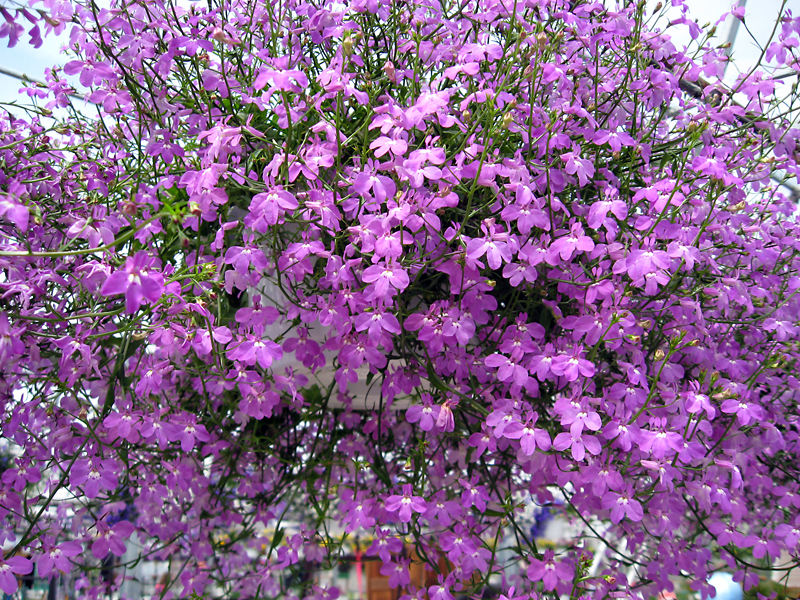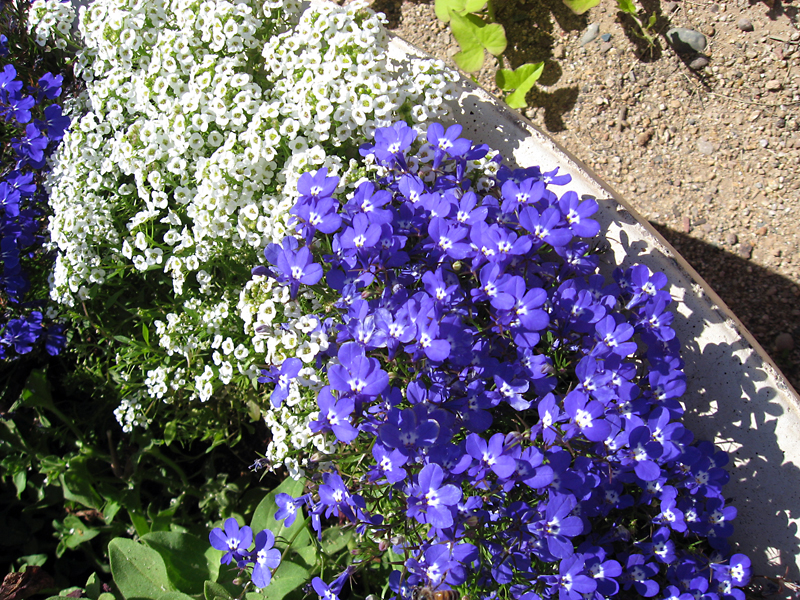Gone Gardenin’ – Lowly lobelia gives garden a stunning edge
Advertisement
Read this article for free:
or
Already have an account? Log in here »
We need your support!
Local journalism needs your support!
As we navigate through unprecedented times, our journalists are working harder than ever to bring you the latest local updates to keep you safe and informed.
Now, more than ever, we need your support.
Starting at $15.99 plus taxes every four weeks you can access your Brandon Sun online and full access to all content as it appears on our website.
Subscribe Nowor call circulation directly at (204) 727-0527.
Your pledge helps to ensure we provide the news that matters most to your community!
To continue reading, please subscribe:
Add Brandon Sun access to your Free Press subscription for only an additional
$1 for the first 4 weeks*
*Your next subscription payment will increase by $1.00 and you will be charged $20.00 plus GST for four weeks. After four weeks, your payment will increase to $24.00 plus GST every four weeks.
Read unlimited articles for free today:
or
Already have an account? Log in here »
Hey there, time traveller!
This article was published 22/05/2014 (4170 days ago), so information in it may no longer be current.
Every gardener has favourite plants, those varieties that are a must-have every year in the garden. One of mine is the lowly lobelia, a plant that I began using in great profusion in my first garden in Birtle many years ago.
Lobelia has continued to be a main feature of my gardens ever since although I do not use nearly as many lobelia plants as I used to in the past. One reason is that I have developed different gardening habits and have “cut back” on some of the more intensive gardening tasks over the years — like edging beds with flowers.
I used to have an edging along all my mixed borders and flower beds, and the go-to plant for this purpose was lobelia, and in particular, the dark purple upright variety called ‘Crystal Palace’.

If you want to have a stunning edging for a flower border, you cannot go wrong using lobelia as the small plants, placed about 10 centimetres apart in a row along the edge of a bed, will create an attractive line of pure colour all summer long.
Although I am partial to ‘Crystal Palace’, there are other varieties that will serve the same purpose, including ‘White Lady’, ‘Rosamond’, and ‘Palace Blue Eye’. The first two, as their names indicate, have white and carmine red flowers, while the last one has dark blue flowers like ‘Crystal Palace’ except with a distinct white eye, creating a unique contrast.
Although I prefer a single colour when I am edging a border, I have alternated ‘Crystal Palace’ and ‘White Lady’ which created a unique contrasting border. “Rosamond’ and ‘White Palace’ could be used to create a similar effect in pink and white.
Some years I also planted a row of dusty miller behind lobelia to create a double edging and the effect was quite effective.
One year I used a small single marigold ‘Lulu’ instead of dusty miller and I was impressed with the effect, except that toward the end of the season, the ‘Lulu’ began to overtake the lobelia. This wasn’t all bad as by mid-August lobelia begins to flag, so the marigolds gradually covered the flagging lobelia plants.
Trailing varieties of lobelia are a wonderful addition to containers and hanging baskets. For years my favourite has been ‘Sapphire’, which has deep blue flowers with white eyes; there are several other colours of trailing lobelia, ranging from reds and pinks through pale blues and lavenders to dark blue.

A co-ordinating colour of trailing lobelia can be chosen to go with the other plants being used in a container. The lobelia can either be used as a contrast, such as dark blue ‘Crystal Palace’ with yellow marigolds, but a lobelia can be used that is in the same colour range as the other plants for a monochromatic colour scheme — lilac geraniums and lavender lobelia is one combination that I have used to good effect.
Lobelia has very finely textured foliage and tiny flowers that literally cover the plants. It is a rather dainty looking plant and provides a nice contrast to more robust looking plants. Its finely textured foliage makes it excellent as a filler for baskets and containers.
For a unique effect, a hanging basket can be filled with nothing else but lobelia. When doing this, use a trailing variety and make sure the plants are crowded together in the container to create a nice full effect. A hanging basket of lobelia will flag toward the end of the growing season but while in peak condition, it will add a stunning focal point to your landscape.
Lobelia likes full sun but will tolerate some shade. In fact, a hanging basket will remain attractive for a longer period of time if it is not exposed to harsh mid-day sun and hot winds. I often pot up small containers of three or four lobelia plants and have them on the shelves on our north-facing deck, where they add colour for a good part of the summer before flagging in mid-August when I replace them with something else.
Such containers cost very little and provide an easy way to add colour to any outdoor display of containers. Using such containers as well as hanging baskets of lobelia is an easy, inexpensive way to incorporate unique colour where you otherwise might not have it.
Lobelia likes its planting medium to be kept moist; if the soil is allowed to dry out, the plants will brown and the bloom will be set back. Regular fertilizing will keep the plants vigorous and in full bloom — ensure the fertilizer has a high middle number to encourage bloom.

Some people sheer their lobelia plants in the late summer when they begin to flag, resulting in new growth being encouraged which produces more flower buds and late bloom.
I have never been very successful at doing this, probably because I don’t sheer the plants early enough — I cannot bring myself to cut off the plants when they are still in bloom. Sheering has to be done early enough to allow for development of new growth and bloom before fall frost.
Lobelia is somewhat tolerant of frost and will be unharmed by a light spring frost so it can go into the garden when other hardy things like petunias, snapdragons, and asters are planted — before the tender salvias and marigolds and impatiens can be put out.
Incorporate some lobelia into your growing plans this spring — you will become addicted to lobelia as I have and will want to use it every year from now on.
OUT & ABOUT
I look forward to speaking to the Newdale Horticultural Society on Monday, May 26 starting at 7 p.m. at Harrison House in Newdale. Not only are these folks great gardeners, but they serve an awesome lunch!

Albert Parsons is a consultant for garden design and landscaping who lives in Minnedosa.
» communitynews@brandonsun.com
